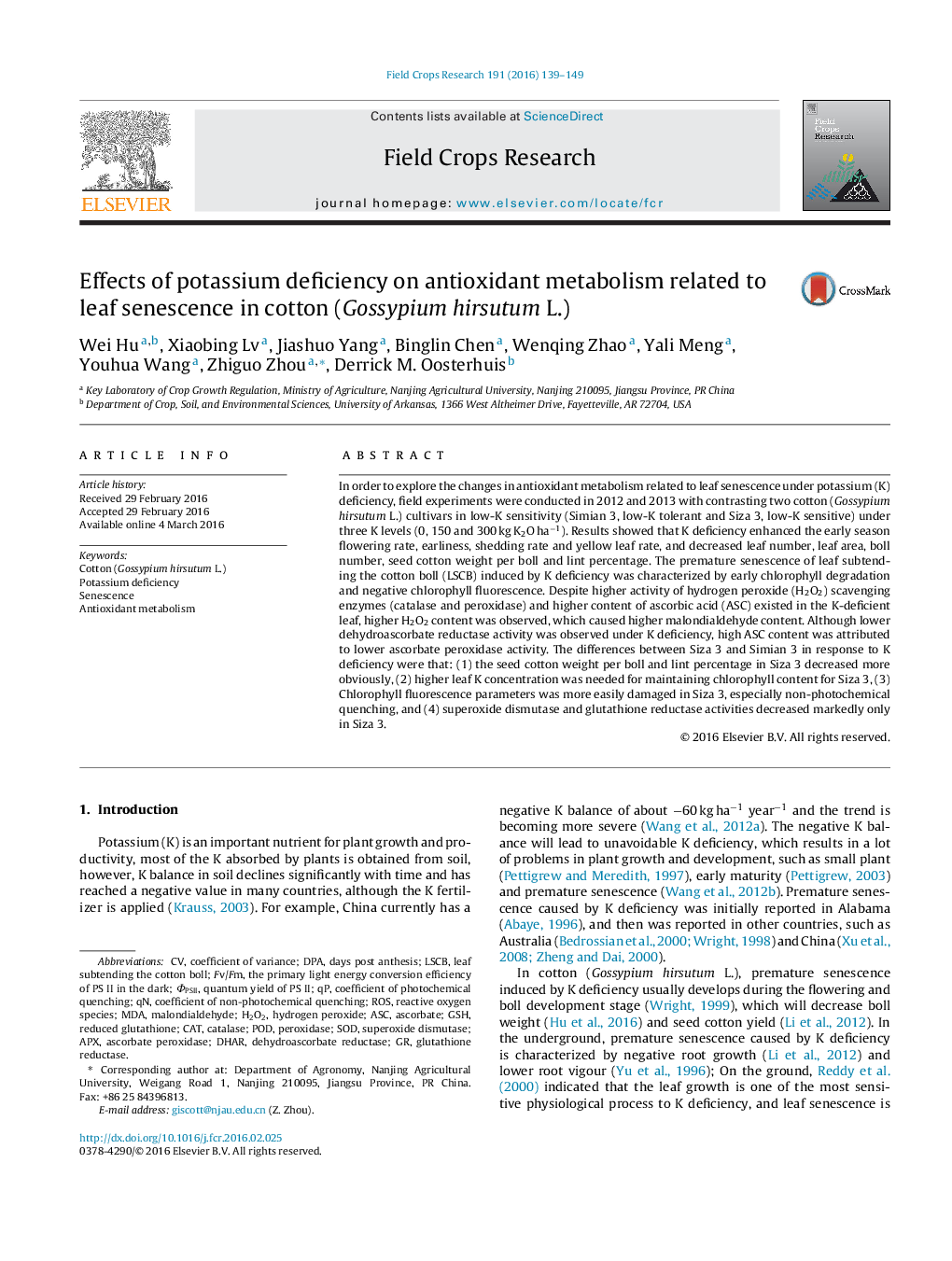| Article ID | Journal | Published Year | Pages | File Type |
|---|---|---|---|---|
| 6374607 | Field Crops Research | 2016 | 11 Pages |
Abstract
In order to explore the changes in antioxidant metabolism related to leaf senescence under potassium (K) deficiency, field experiments were conducted in 2012 and 2013 with contrasting two cotton (Gossypium hirsutum L.) cultivars in low-K sensitivity (Simian 3, low-K tolerant and Siza 3, low-K sensitive) under three K levels (0, 150 and 300 kg K2O haâ1). Results showed that K deficiency enhanced the early season flowering rate, earliness, shedding rate and yellow leaf rate, and decreased leaf number, leaf area, boll number, seed cotton weight per boll and lint percentage. The premature senescence of leaf subtending the cotton boll (LSCB) induced by K deficiency was characterized by early chlorophyll degradation and negative chlorophyll fluorescence. Despite higher activity of hydrogen peroxide (H2O2) scavenging enzymes (catalase and peroxidase) and higher content of ascorbic acid (ASC) existed in the K-deficient leaf, higher H2O2 content was observed, which caused higher malondialdehyde content. Although lower dehydroascorbate reductase activity was observed under K deficiency, high ASC content was attributed to lower ascorbate peroxidase activity. The differences between Siza 3 and Simian 3 in response to K deficiency were that: (1) the seed cotton weight per boll and lint percentage in Siza 3 decreased more obviously, (2) higher leaf K concentration was needed for maintaining chlorophyll content for Siza 3, (3) Chlorophyll fluorescence parameters was more easily damaged in Siza 3, especially non-photochemical quenching, and (4) superoxide dismutase and glutathione reductase activities decreased markedly only in Siza 3.
Keywords
DPAquantum yield of PS IIMDAΦPSIIdehydroascorbate reductaseDHARAPXGSHASCCATPODFv/FmROSHydrogen peroxideAscorbateDays post anthesisSODSuperoxide dismutaseCoefficient of variancemalondialdehydeAntioxidant metabolismH2O2Peroxidaseascorbate peroxidaseCotton (Gossypium hirsutum L.)SenescenceCatalasereduced glutathionePotassium deficiencyglutathione reductaseReactive oxygen species
Related Topics
Life Sciences
Agricultural and Biological Sciences
Agronomy and Crop Science
Authors
Wei Hu, Xiaobing Lv, Jiashuo Yang, Binglin Chen, Wenqing Zhao, Yali Meng, Youhua Wang, Zhiguo Zhou, Derrick M. Oosterhuis,
